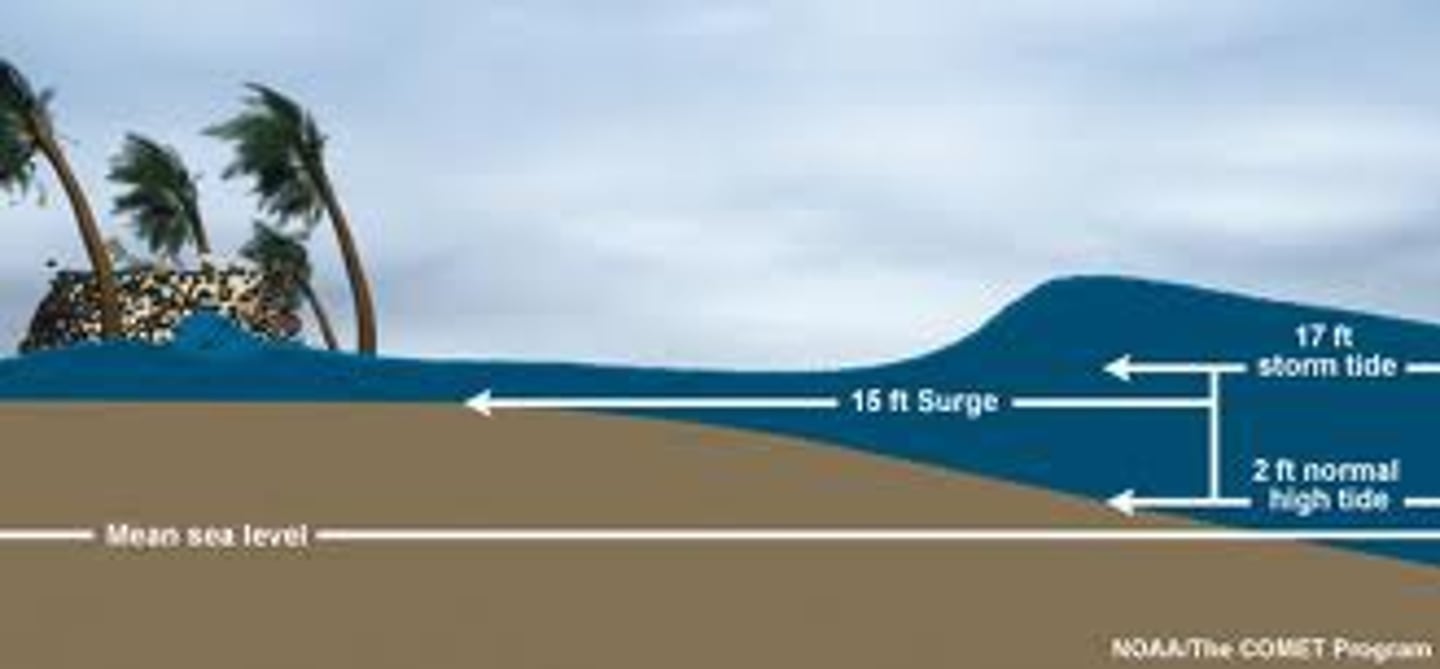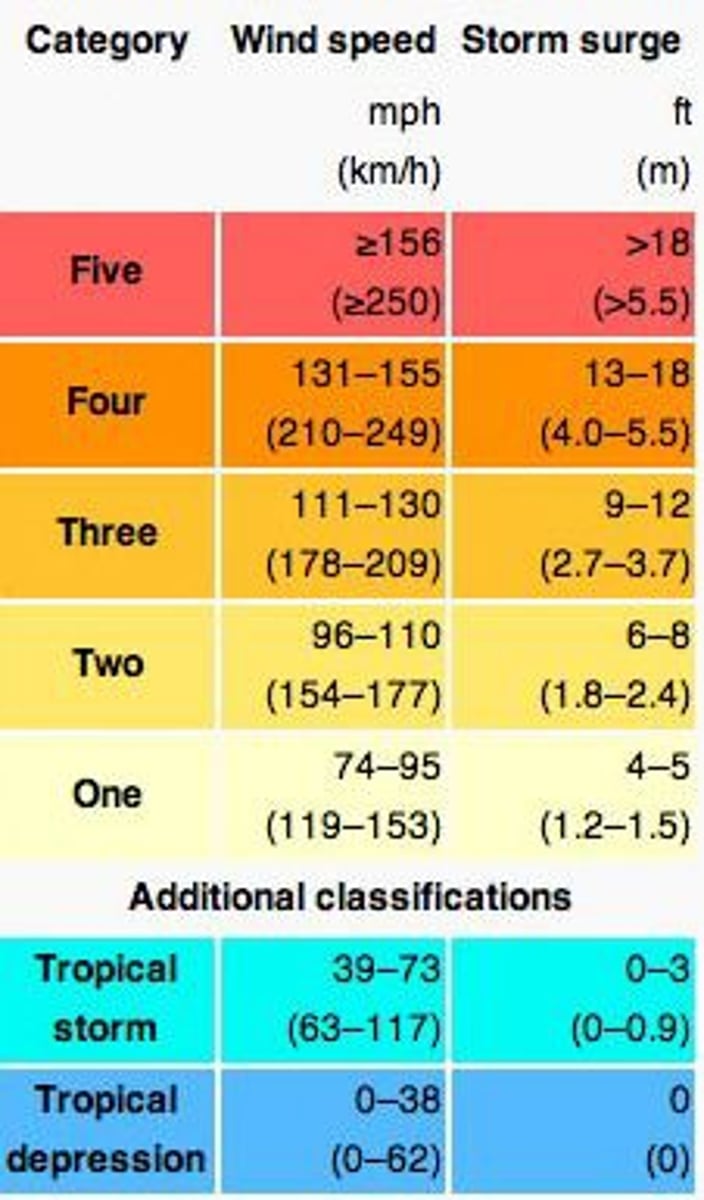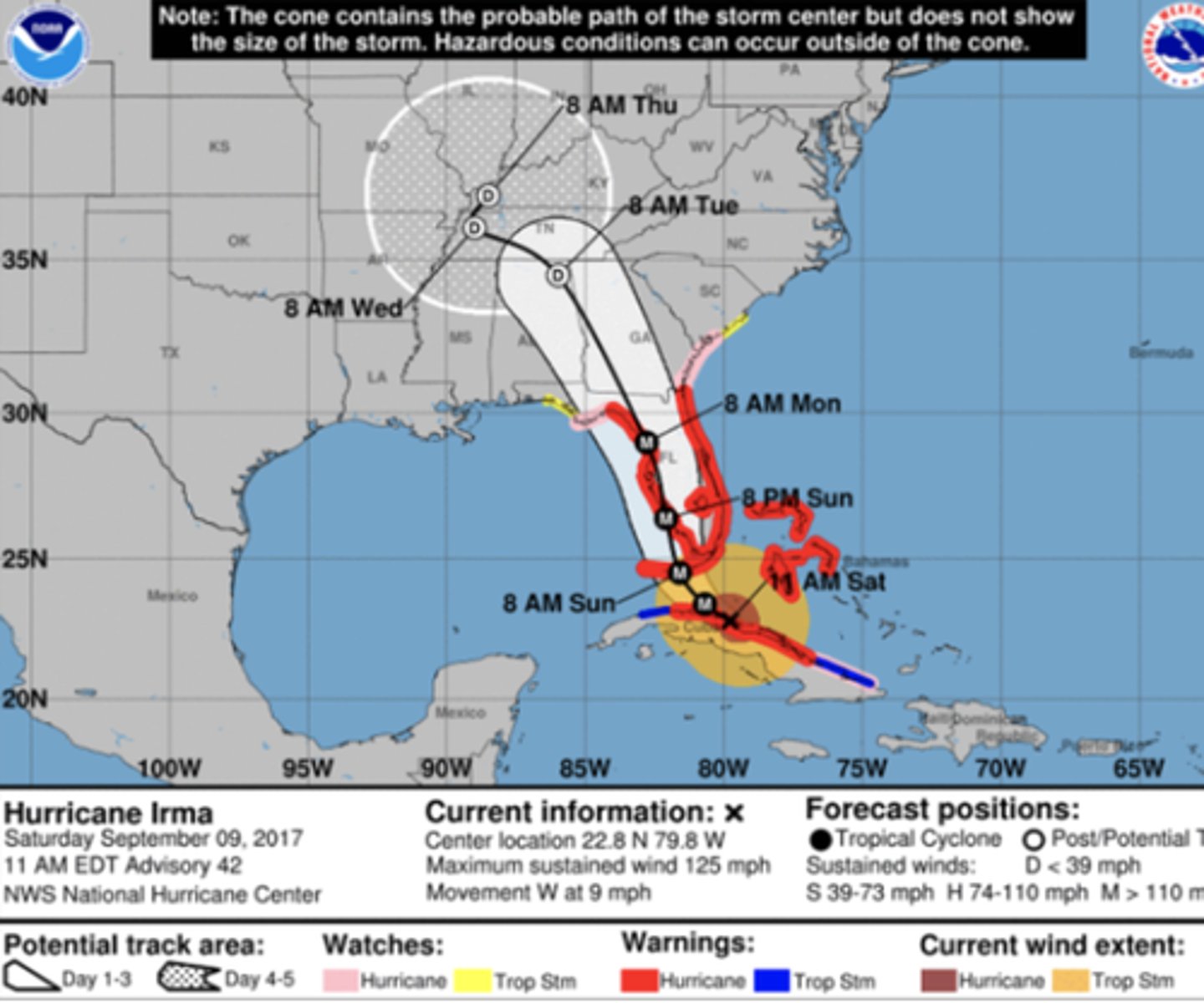U2, L4: Hurricanes
1/18
There's no tags or description
Looks like no tags are added yet.
Name | Mastery | Learn | Test | Matching | Spaced |
|---|
No study sessions yet.
19 Terms
Why does wind blow toward the equator?
The equator is the hottest area on the planet and therefore always is an area of low pressure.
hurricane
A severe storm that develops over tropical oceans and whose strong winds of more than 120 km/h (or 74 mph) spiral in toward the intensely low-pressure storm center
storm surge
a local rise in sea level near the shore that is caused by strong winds from a low pressure system, such as those from a hurricane.

Air pressure ________ with altitude
decreases
Air density affects what?
Air resistance. The higher the air density is, the harder it is for an object to travel through it. This is why it is easier to hit a home run in Denver, Colorado than San Diego, California.
tropical storm
a localized, very intense low-pressure wind system, forming over tropical oceans and with winds of hurricane force. Sustained winds from 39 - 74 mph.
What is a levee?
Levees - (long, raised mounds of earth) along the banks of rivers hold water in channels. These structures prevent flooding at most times and places. (Hurricane Katrina)
Where are the strongest winds in a hurricane?
eye wall
What are the conditions like inside of a hurricane eye?
Calm air and clear sky.
How many categories of hurricanes are there?
5

Maritime Polar (mP)
unstable cold, moist air mass that forms over cold oceans
What is needed for a hurricane to form?
-Sea surface temperature 80 degrees fahrenheit or greater
-Continuous warm humid air rising, thereby creating an are of Low pressure
-Coriolis effect
-low upper level wind shear
What is the Saffir-Simpson Hurricane Scale based on?
Sustained winds of a tropical cyclone / hurricane.
What is the order of development for hurricane?
Tropical depression, tropical storm, hurricane

tropical depression
a region of low pressure with counter-clockwise wind rotation that develops into a hurricane or tropical storm. Sustained winds are less than 39 mph.

hurricane watch
an alert that is given 48 hours in advance to residents that lets them know hurricane force wind is possible
hurricane warning
A warning that hurricane conditions (sustained winds 74 mph or greater) are expected in a specified coastal area in 36 hours or less.
Tropical Cyclones (Hurricanes)
Large, low pressure, rotating storm that gets its energy from the evaporation of warm ocean water and the release of heat.
NHC Forecast Cone
Shows the projected path of the eye, or center, of the storm system. Winds and storm surge can extend well outside of the cone.
